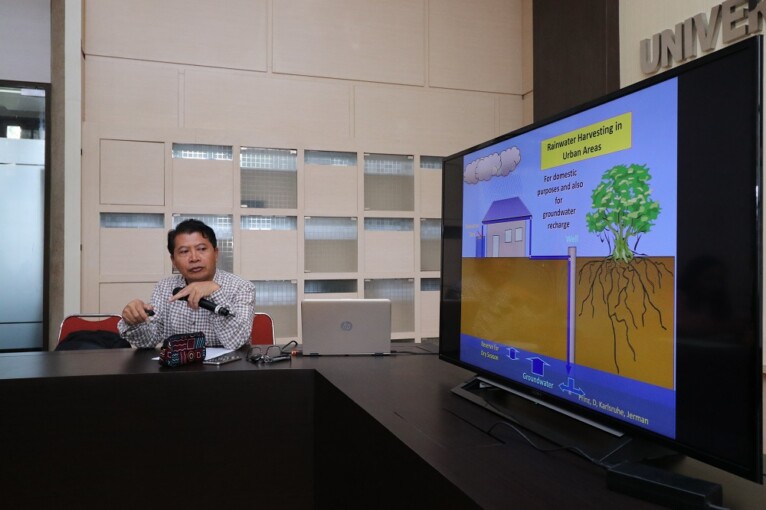
Hydrology expert from Engineering UGM, Dr. Agus Maryono, has invited people to harvest rainwater regularly during the rainy season. Rainwater harvesting is needed to anticipate drought conditions from the prolonged dry season, worsened by the El Nino that is predicted to come later this year.
“We should always anticipate drought as we do for flood,” Agus said to reporters on Friday (9/14) at the campus in response to the effects of drought that struck parts of Indonesia.
According to Agus, drought can be anticipated by accumulating rainwater in a reservoir or channeling it into a well. “Let’s manage the rainwater during the 4 to 6 months,” he said.
The storage of rainwater is advised to reduce people’s dependence on Indonesian Water Utility Companies. He asserted that even farmers could use rainwater by building wells or ponds around agricultural land.
Houses with wells can store rainwater by redirecting it from the roof through water pipes into a well or reservoir. Simple filters made of fabric or t-shirts can be used to filter the water from any dirt on roofs.
However, he added, people are not used to doing this, causing drought in some areas during the dry season. “Back then, people used to manage rainwater by themselves. But now this matter has been handed over to water utility companies or irrigation services for agriculture.”
In agricultural districts, farmers should get used to making fish ponds in paddy fields by using rainwater. This way, the remaining water could still seep into the ground when the dry season comes. “Rainwater can be used for fish farming,” he opined.
Moreover, he also advised people to get used to looking for springs, even managing old, unused wells to accumulate rainwater. In his opinion, it is essential to collect rainwater and reuse it once the dry season arrives.
Regarding the questions about whether rainwater is consumable, Agus answered that it is still safe for consumption in Indonesia. He has conducted around 20 research on the pH level of rainwater in various Indonesian regions such as Yogyakarta, Bali, Bogor, and Jakarta. The findings showed that the average pH level of rainwater ranged from 7.2 to 7.4. “It is indeed safe, but you should not use the first third catchment for consumption because it still contains dust and pollutions.”

